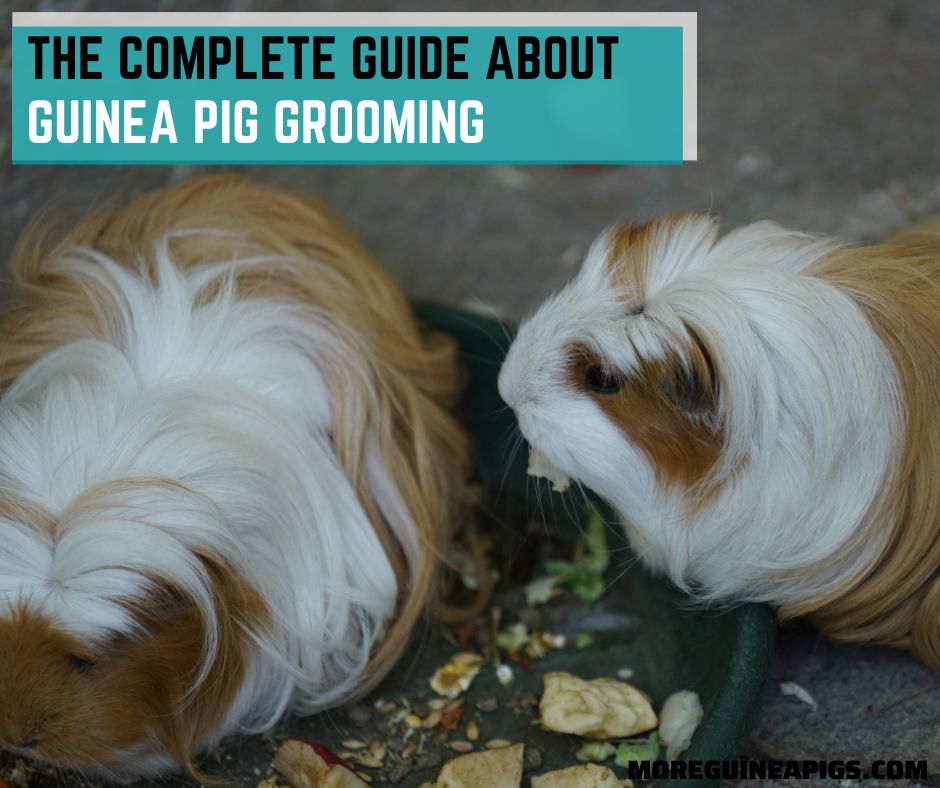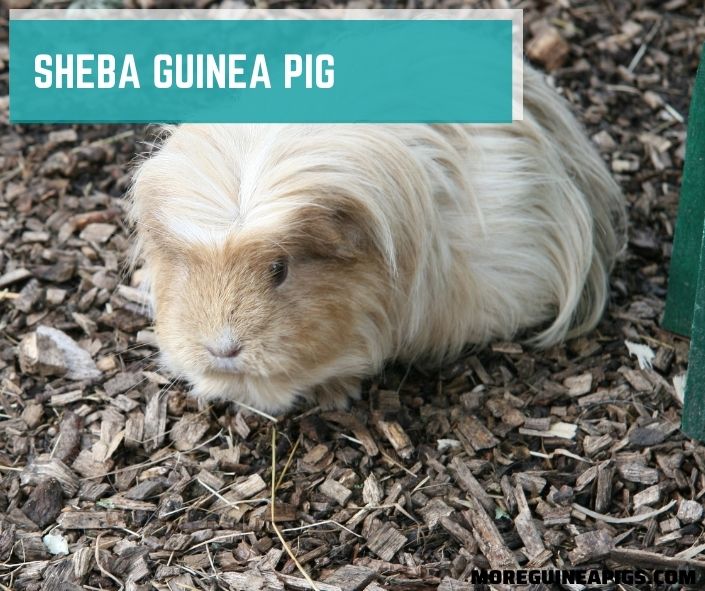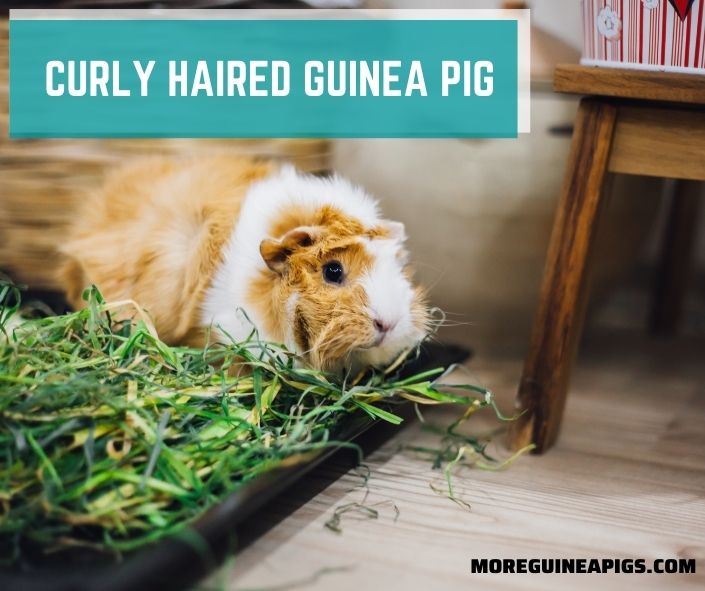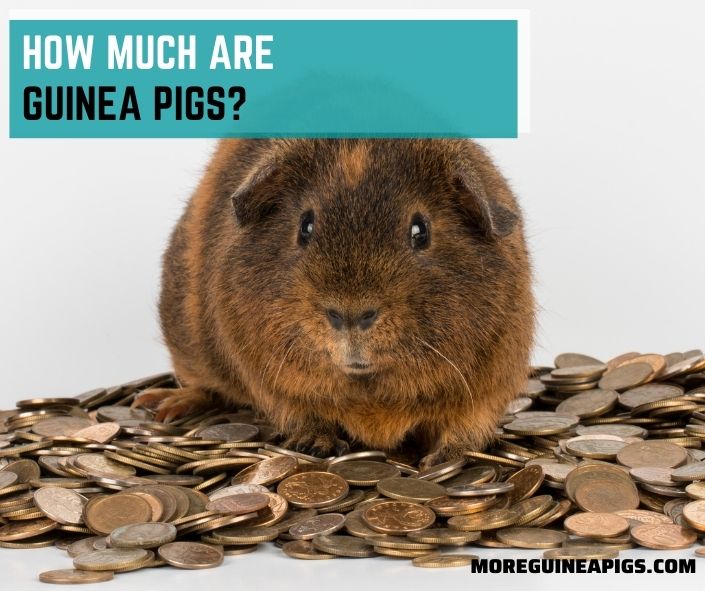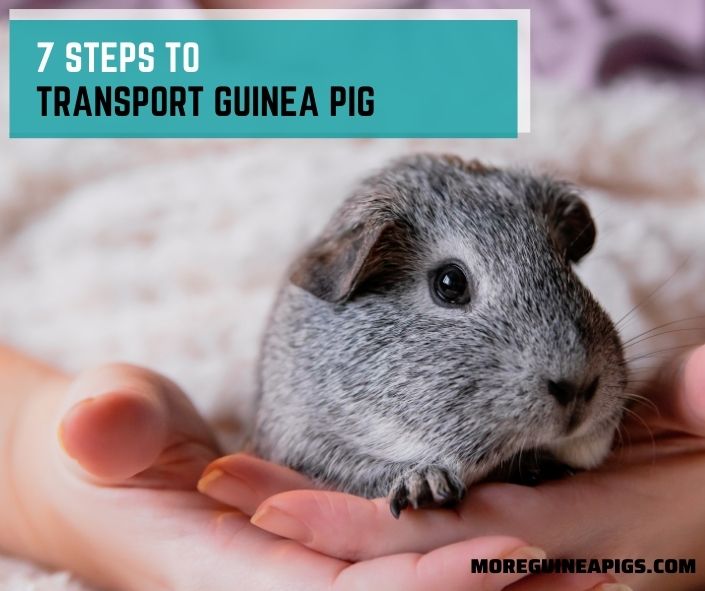The Complete Guide about Guinea Pig Grooming
Grooming is as important for your guinea pig as proper diet and safe living quarters. Even the cleanest cage will not help your pet while it sheds as much as good brushing and combing will.
Guinea pigs shed their hair so that a new coat can grow in its place. That is why regular brushing, baths, and combing are important to keep your pet neat and tidy.
Grooming is especially important if you plan on showing your guinea pig.
After all; the cleanest, neatest piggy will win more points with the judges than a poorly presented one. In this guide, we will talk about various aspects of guinea pig grooming.
Do Guinea Pigs Need to Be Groomed?
Yes. Guinea pigs need regular grooming. Grooming is not only important to keep your pet clean and tidy; it is also a great way to bond with it.
Here are some factors to consider when it comes to guinea pigs’ grooming requirements:

#1. The breed
Short-haired guinea pigs such as the American guinea pig and the rough-coated guinea pig-like the Abyssinian are fairly easy to groom.
They make great pets for kids for this very reason. On the other hand, the long-haired varieties like the Peruvian, Silkie, and Sheltie need quite a lot of grooming including regular hair cuts.
Also read: 13 Best Guinea Pig Breeds – Most Complete List
#2. Some guinea pigs tend to groom each other
If you house two or more guinea pigs in the same cage, they might groom each other.
Two males, two females, and even one male and one female piggy will gladly lick each other’s fur and face clean. This is the reason why they don’t need frequent baths.
#3. They also lick themselves clean
Most guinea pigs lick themselves when they feel they are in need of a little wash.
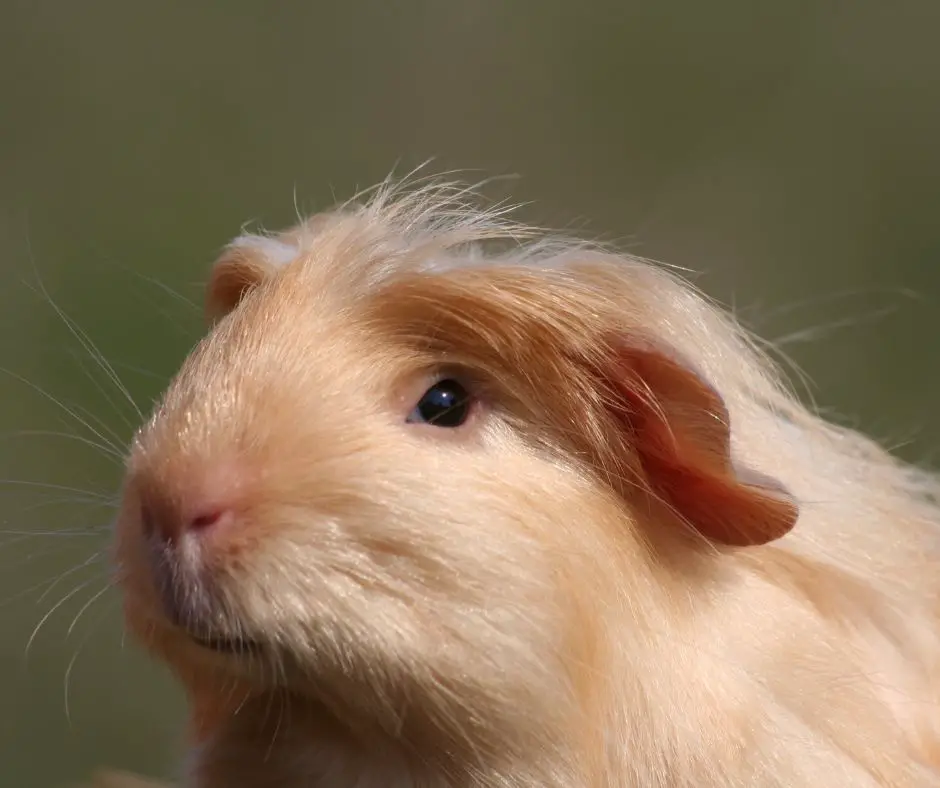
Basic Guinea Pig Grooming Kit
It is important to buy a basic grooming kit for your guinea pigs. Here are the items every guinea pig grooming kit should have:
- A soft-bristled brush/ toothbrush/baby brush/ slicker brush with protective covers/ends
- A metal flea comb
- Pet wipes
- Q-tips
- Spray bottle
- A shedding slicker brush or a pet glove
- Nail clipper and nail file.
- Towel
- Vet-recommended/small-animal shampoo or dry shampoo
- Non-skid bath mat
- A small plastic bowl or tub
6-Piece Rabbit Grooming Kit with Pet
How to Groom a Guinea Pig: A-Z Things To Know
Grooming generally takes about 30 minutes a month for the shorthaired and rough-coated guinea pigs and around 2 hours a month for the long-haired piggies.
Most owners include nail trimming, coat brushing, and an occasional bath as part of their pet’s grooming.
Know when to Groom
Brushing is very important for all coat-types. It especially helps remove mats and tangles in long-haired piggies.
Regular brushing also helps you check your buddy for fleas, ticks, mites, and other parasites. During shedding season, it eliminates hairballs which can be harmful for your pets. Regular brushing is also a great way to bond with your pet.
How Often to Brush
How much, when, and how often to groom a guinea pig depends on its breed and coat type. Long-haired coat types need daily brushing and combing to prevent mats and tangles.
The short and rough-hair varieties can be groomed two or three times a week. As mentioned earlier, some guinea pigs groom each other and some even fastidiously clean themselves.
If your pet has a specific coat or skin issue such as ticks, fleas, lice, mites, allergies, etc. then daily grooming as advised by the vet is important. In some cases, your pet will also need a medicated bath.
During shedding season – which is typically more pronounced during spring and summer months – you may want to groom your guinea pig more frequently to remove loose and dead hair.
Brushing your guinea pigs daily is suggested but if you are busy, you can make it a twice-weekly activity.
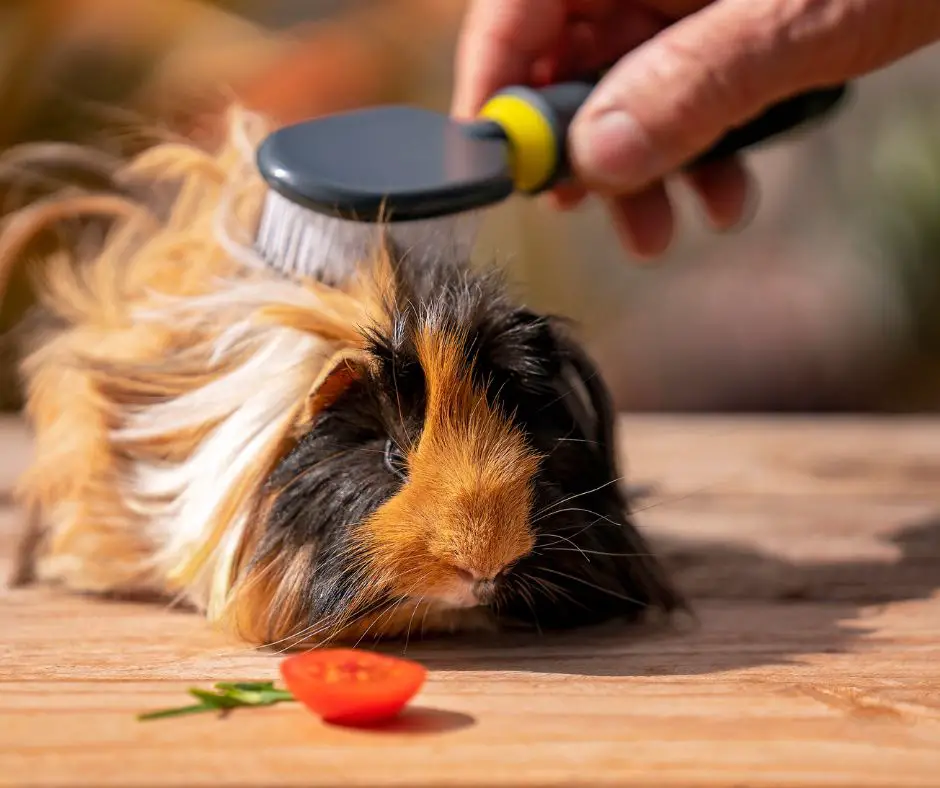
What Happens If You Don’t Brush
If you don’t brush your piggy regularly, then parasites like mites and fleas could lead to hair loss.
If you have a longhaired guinea pig, then it is recommended you brush it daily because mats and tangles can set in easily and they can be very painful to remove.
Also, long-haired guinea pigs need daily brushing to ensure food isn’t trapped in their long silky coat. Trapped food bits can invite bacteria and other parasites leading to skin conditions.
Long Haired guinea pigs are also prone to flystrike where maggots enter the skin and lead to extreme pain and discomfort. This can even be fatal if not treated promptly.
With regular brushing, you can quickly begin treatment for these skin conditions before they escalate and spiral out of control. Brushing also eliminates hairballs which can be harmful to your pets if swallowed.
Tools to use
We recommend the Kaytee Pro Slicker Brush for brushing your pet:
- It reduces shedding considerably.
- Kaytee brush is recommended by vets and is also the choice of professional groomers for small animals like guinea pigs.
- It is gentle and won’t hurt your pet’s delicate skin.
Kaytee Pro-Slicker Brush
Steps for Brushing Short Haired Guinea Pig
- Place your pet on a table away from drafts.
- Use the brush to brush your pet from rump to head.
- If needed, bathe your pet. Dry it thoroughly and then brush again.
- Repeat 2-3 times a week.
Steps for Brushing Long-Haired Guinea Pig
You need metal combs, hair dryer, towel, rag curlers and rubber bands to tie your long-haired guinea pigs’ hair.
- If your pet needs a bath, bathe it.
- As soon as its hair is dry, use a metal comb to part the rear sweep of your long-haired piggy’s into two sections and side sweeps into three sections. Never use plastic combs as they can break the silky hair.
- You can wrap the sweeps in rag curlers or trim them to reduce their length.
- Rag curlers secured with rubber bands are very useful in reducing tangles and dirt from getting trapped in the coat. You don’t need to wrap the head furnishings or the frontal sweeps of Peruvians in rag curlers.
- For Silkies, do not part the hair – just twist the mane gently so it won’t part.
Also read:
- 9 Long-haired Guinea Pig Breeds (Plus Tips to care for their Long Hair)
- 4 Curly Haired Guinea Pig Breeds and 3 Interesting Facts About Them
Hair Trimming
All breeds of guinea pigs need butt trimming. The longer hair around the butt area tends to get dragged in the urine and feces. This can lead to unhygienic conditions and even result in urine infections/UTIs.
Keeping the hair short in all breeds – especially around the genitals – can reduce the risk of UTIs.
Trimming is also important for long-haired varieties. It can keep the hair from their face and reduce food bits getting trapped in it.
If you’re unsure how to trim your long-haired pet, take it to the vet or groomer who can do it for you.
Nail Trimming
You must trim your guinea pig’s nails regularly. If left untrimmed, they could hurt your pet when it scratches itself. Also, nails tend to curl inwards and might start poking into your pet’s footpads.
How often to Trim
The frequency of nail trimming varies from animal to animal. Ideally, you should trim your guinea pig’s nails once a month. Some younger cavies need more frequent trims whereas senior or older pets can do with less frequent trims.
Tools Needed
We recommend the Kaytee Pro Nail Trimmer:
- Ideal size for small animals
- Precise cutting edge for quick cutting
- Easy to use
- Easy-grip handle to rest your fingers.
Kaytee Pro-Nail Trimmer
Steps for Trimming Your Guinea Pig’s Nails
- Use nail trimmers designed specifically for small animals
- Hold your guinea pig close to your body or in your lap.
- Hold its paw firmly and gentle press down to spread out the nail from its pads.
- Before trimming, look for the quick– the inside of the nail. This is the part that has a rich supply of blood vessels. You want to avoid hurting this area as it can bleed heavily. The quick is pinkish in color. If your cavy has dark nails, then hold a light behind it to locate the quick.
- Keep some styptic powder on hand to stem blood flow if you do happen to cut too close to the quick.
- Give your pet some rest before moving to the other nails.
Check out our detailed guide on How to Clip Guinea Pigs Nails
Occasional Bathing
Only bathe your cavy if its is very dirty or smelly. If your pig cleans itself fastidiously or they groom each other, a bath isn’t necessary.
How often to Bathe
Guinea pigs can do with a bath once in 2-3 months. Long-haired cavies can be bathed once a month in summers and once every 2-3 months in winters. Short-haired varieties can be bathed once in 3 months – summers or winters.
Remember: Overbathing can strip off natural oils from your pet’s coat and, over time, it might lose its shine and density.
Steps to Bathe
- Place a towel or a small anti-skid rubber mat in a small tub
- Add about 2-3 inches of warm water to the tub.
- Place your pet’s rump gently into the water and pour some more warm water on top to wet its back, shoulder, and rump. Avoid pouring water over its face
- Take a small amount of shampoo and work up a lather on the back.
- Massage your buddy gently.
- In long-haired breeds, avoid tangling the silky hair.
- Work small sections of the hair.
- Rinse thoroughly with warm water.
- For long-haired breeds, use a conditioner
- Dry your pet with a hairdryer (use warm setting only) or with a towel.
- Brush your pet’s coat after it is dry.
- For long-haired breeds, trim the hair or set it in rag curlers.
Check out our detailed guide on ‘How to Bathe a Guinea Pig’
Bath Alternatives for Guinea pigs
If you cannot bathe your little piggy, there are several options to make it smell fresh and clean:
- Dry shampoo – A dry shampoo like Kaytee Quick Clean Critter Shampoo is a no-rise product. It removes dirt, deodorizes, and leaves your pet fresh and clean. Simply spray it on your pet avoiding the eyes and mouth. Leave it on.
- Diluted apple cider vinegar – Dilute half a teaspoon of organic apple cider vinegar with 10 to 20 teaspoons of water. Dip a soft cloth into this solution and gently wipe your pet from the rump to the head. This will deodorize it and also eliminate fleas and ticks.
It is also OK to not bathe your piggy. Guinea pigs clean themselves and do not really need baths unless they are absolutely dirty and smelly.
Kaytee Quick & Clean Critter Dry Shampoo, 8-Ounce
Grooming Other Body Parts
Guinea pigs sometimes need dental cleaning, ear cleaning and grease glands expression. These three areas can cause foul body odor in your pet.
Dental Care
Most Guinea pigs do not need too much oral care – especially if you feed them a diet of crunchy pellets and crispy vegetables like celery and carrots.
You pet should also get plenty of hay daily as the chewing action naturally wears down its teeth and keeps them from forming impacted teeth or abscesses.
Also provide your pet with ‘chew toys’ like cardboard, paper towel rolls, or toilet paper rolls as they naturally keep the teeth clean and also prevent boredom.
Also read: 9 Best Guinea Pig Toys
Ear Care
Here is how to clean your guinea pigs’ ears:
- Place your pet on a towel.
- Take a clean Q-tip and dip it in some olive oil
- Gently clean the folds of the ear and outer ear with the Q-tip.
- You can also add a few drops of olive oil inside your pet’s ear folds (but not inside the ear canal). Gently massage the ears to spread the oil evenly.
- Repeat the steps for the other ear.
Grease Gland
- Locate the grease gland at the end of your pet’s spine. It is a circular area that will feel greasy – it is sized like a small dime.
- Trim the excess hair around the region.
- Apply coconut oil to the grease gland and allow it to sit for a few minutes. This will remove the waxy secretions.
- Next, use a degreaser or mild critter shampoo to remove the greasy buildup.
- Rinse off with warm water and towel dry your pet.
Guinea Pig Grooming Services
If you are unsure how to groom your guinea pig at home, take it to a vet or a professional groomer. Many professional groomers specialize in small and exotic pet grooming.
Typically, professionals charge around $10-$45 for grooming small critters depending on the services they offer. Basic grooming includes bath, brushing, grease gland cleaning, ear cleaning, and nail trimming.
Conclusion
Guinea pigs need grooming to remain clean, tidy, and healthy. Regular grooming sessions also let you observe your pet for parasites or skin infections. It is also a great way to bond with your pet.
We hope this guide helps you with some useful tips to groom your furry friends efficiently!
